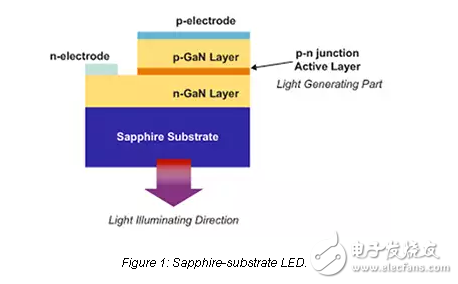
资料下载

碳化硅衬底的LED亮度提高
碳化硅衬底的LED亮度提高
当代LED大部分是由一个组合的氮化铟镓(InGaN)和蓝宝石衬底。建筑作品,使得LED制造商提供150 lm/W,然而过量的参展功效产品,建筑也有一些缺点,鼓励芯片制造商寻求其他选择。
一个商业上成功的替代品是碳化硅(SiC),基于衬底的LED已经上市两年了。现在,新一代的技术已经发布,承诺将亮度提高一倍,目前最亮的单LED和削减照明灯具成本百分之40。
本文着眼于SiC技术,并介绍了最新的芯片材料的基础上,看看他们如何与上一代和当代蓝宝石基板LED比较。

Manufacturing challenges
InGaN is the material of choice for the manufacture of today’s high-brightness white LEDs. The bandgap of the semiconductor is carefully manipulated such that the LED die emits blue photons, the majority of which are absorbed by the LED’s phosphor coating and re-emitted in the yellow part of the spectrum. The mixing of blue and yellow light produces a good approximation of white light.
Unfortunately, unlike the silicon used for most integrated circuits –– which can be cheaply produced leading to low-cost components –– InGaN is difficult to manufacture in large ingots. LED makers overcome this difficulty by using an epitaxial technique such as metalorganic-chemical-vapor deposition (MOCVD)。 This process overcomes the need to grow bulk InGaN, instead building up the material by depositing successive thin films on a suitable substrate.
The most common material for the substrate is sapphire (Al2O3)。 The mineral is cheap, durable, and a good insulator. Figure 1 shows a cross section of a sapphire-substrate LED.
声明:本文内容及配图由入驻作者撰写或者入驻合作网站授权转载。文章观点仅代表作者本人,不代表电子发烧友网立场。文章及其配图仅供工程师学习之用,如有内容侵权或者其他违规问题,请联系本站处理。 举报投诉
- 相关下载
- 相关文章





